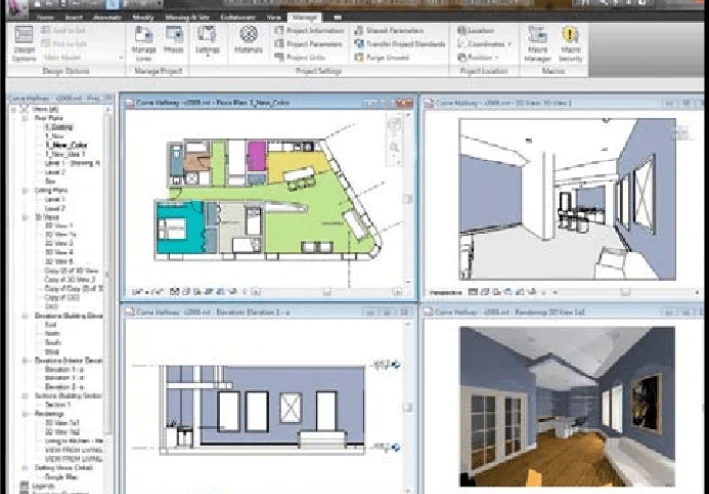
Autodesk Revit: Transforming the Future of Building Design
Autodesk Revit: Transforming the Future of Building Design
Introduction
Autodesk Revit is one of the most influential tools in the Architecture, Engineering, and Construction (AEC) industry. It is not just a drafting program—it is a comprehensive Building Information Modeling (BIM) platform that integrates design, visualization, documentation, and collaboration into a single intelligent workflow. Since its introduction, Revit has reshaped how professionals approach building design, enabling a more coordinated, efficient, and data-driven process
Autodesk Revit is a powerful Building Information Modeling (BIM) software widely used in the architecture, engineering, and construction (AEC) industry. It enables architects, structur engineers, and MEP professionals to design, visualize, and document building projects in a highly coordinated and data-rich environment. Unlike traditional CAD software, Revit works with intelligent 3D models, allowing users to generate accurate plans, sections, elevations, and schedules directly from the model. Its collaborative features facilitate seamless integration between multidisciplinary teams, ensuring design accuracy, reducing errors, and improving overall project efficiency..
Key Features and Capabilities
1. Building Information Modeling (BIM)
At the core of Revit lies BIM technology, which allows users to work with intelligent 3D models containing both geometric and non-geometric information. Every element—from walls and beams to doors and HVAC systems—is a data-rich component that can be used for design analysis, scheduling, and cost estimation.
2. Parametric Design
Revit’s parametric components ensure that any changes made to the model are automatically reflected across all views and documentation. This dynamic updating reduces human error and ensures design consistency throughout the project lifecycle.
3. Multidisciplinary Collaboration
Revit supports collaboration between architects, structural engineers, and MEP professionals through cloud-based worksharing. Multiple team members can work on the same model simultaneously, enabling real-time coordination and reducing conflicts between different disciplines.
4. Documentation and Schedules
With Revit, all drawings, sections, elevations, and schedules are generated directly from the 3D model. This ensures that any design modification is instantly reflected in the documentation, maintaining accuracy and saving significant time.
5. Visualization and Rendering
Revit integrates seamlessly with visualization tools like Enscape, Lumion, and Twinmotion, allowing professionals to create high-quality renders, animations, and virtual reality experiences to communicate design intent effectively.
Applications in the Industry
Architectural Design: From conceptual massing models to detailed construction documentation, Revit supports every stage of the architectural design process.
Structural Engineering: Structural components, rebar detailing, and analysis integration make Revit a robust tool for civil and structural engineers.
MEP Design: Mechanical, electrical, and plumbing systems can be designed, coordinated, and analyzed within the same environment.
Facility Management: BIM data in Revit can be used post-construction for maintenance and facility operations.
Advantages of Using Revit
Improved Design Accuracy: Reduces errors through coordinated and data-linked models.
Time Efficiency: Automates repetitive tasks like schedule creation and sheet setup.
Enhanced Collaboration: Cloud-based workflows allow global teams to work together in real time.
Cost Optimization: Early clash detection and accurate quantity takeoffs minimize costly design revisions.
Conclusion
Autodesk Revit has become an essential platform for modern building design and construction. Its BIM-driven approach not only improves efficiency and collaboration but also ensures that projects are delivered with higher accuracy and quality. As the AEC industry continues to embrace digital transformation, Revit remains at the forefront, empowering professionals to design smarter, build better, and innovate faster.




































